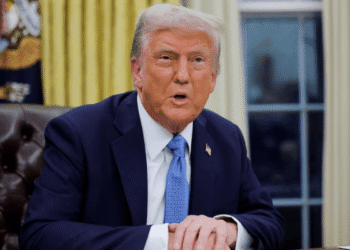In a dramatic political pivot, President Donald Trump is flooding the zone with sweeping economic proposals—including a $2,000 check for voters and 50-year mortgages—after his party’s election drubbing last week revealed deep public anger over his handling of the economy. But a closer look reveals the plans are underfunded, could worsen inflation, and are being viewed with alarm by experts and members of his own party.
The centerpiece is a promise to send $2,000 “subsidies” to most Americans, a move that directly contradicts his previous claims that affordability concerns were a Democratic “con job.” The reality, however, is far from the simple cash giveaway it appears to be.
The Shocking Catch #1: The Math Doesn’t Add Up
The White House claims the payments would be rebates from tariff revenue, but economists confirm the numbers are a fantasy. “The minimum cost would be about $300bn, which would absorb all of the tariff revenue… and would require some deficit financing,” said Erica York of the non-partisan Tax Foundation. Even Treasury Secretary Scott Bessent has since downplayed the checks, suggesting the money would instead be used for tax cuts.

The Shocking Catch #2: It Could Make Inflation Worse
The plan could backfire spectacularly on the very affordability crisis it aims to solve. “It would give large sums of money to households who are more likely to consume that than save it,” York warned. “So we would have more dollars chasing goods in the economy,” potentially driving prices even higher.
Meanwhile, Trump’s push for 50-year mortgages as a solution for homebuyers is facing a brutal reception from his own allies.
The Shocking Catch #3: The Mortgage Plan is a “Boon for Lenders.”
Republican firebrand Marjorie Taylor Greene publicly slammed the idea, writing, “It will ultimately reward banks, mortgage lenders and home builders while people pay far more in interest over time and die before they ever pay off their home.”
The policy blitz appears rushed and reactive, with reports indicating Trump floated the mortgage idea without consulting senior advisers. This scattershot approach—which also includes a plan to convert health insurance subsidies into direct cash payments—has one clear trigger: last week’s elections, where exit polls confirmed the economy is the top issue for a pessimistic electorate.
Why It Matters
Let’s call this what it is: a political Hail Mary, not a coherent economic strategy. The “shocking catch” is that these proposals are fundamentally unserious. The $2,000 check is a deficit-busting mirage that could reignite the inflation Trump claims to have tamed, and the 50-year mortgage is a generational trap that would enrich banks at the expense of homeowners.
This is the same playbook Biden used and that Trump successfully ran against—a Washington leader insisting the economy is strong while scrambling with gimmicks to address the very real pain voters are feeling. The sheer speed and lack of detail reveal a campaign-in-crisis, not an administration governing.
For voters, the real catch is that these “solutions” may ultimately leave them poorer, either through higher prices or a mortgage they can never pay off. The man who once mocked affordability concerns as a “con job” is now trying to con you into believing he has the answers.















